|
EXTRA: INTERVIEW met CLAUS LUTHE
Bron: website Duitse Ro80 club --artikel
door C.v.Klösterlein. en nu maar hopen dat ie dit
goed vindt...
Uit Wankel Journal #1, December
1996 Gespräche mit Claus Luthe -
Talking to Claus Luthe
This is the summary of conversations I had
with Claus Luthe, the designer of the NSU Ro 80 body. Claus Luthe is honorary
member of several Ro 80 Clubs. We met at a meeting of the 'NSU Ro80-Club der
Schweiz' in September 1995 at the vineyard of Rudolf Benz and in the NSU
exposition pavilion 'Historische Sammlung NSU' in Neckarsulm. Claus Luthe has
supplemented my draft during a number of telephone conversations.
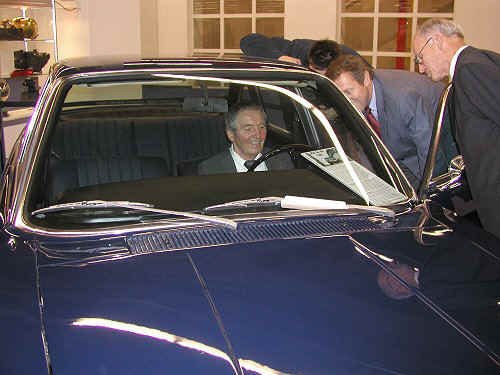 We strolled in the exhibition hall between all
the NSU vehicles presented, and of course we stopped at the Ro 80. Claus Luthe
explained some design details. He stops at the front of the car and says: We strolled in the exhibition hall between all
the NSU vehicles presented, and of course we stopped at the Ro 80. Claus Luthe
explained some design details. He stops at the front of the car and says:
What I wanted to achieve here was the impression of sleekness and elegance. The
first design featured an even lower bonnet. But since the increased engine
capacity required more cooling, a bigger radiator had to be placed, and some
auxiliary equipment was more space-consuming, too. It's the well-known story,
the Wankel engine itself is very space-saving, but all the peripherals just stay
what they are. One early design had no grill at all, just the big air intake
under the bumper. Above the bumper, this design featured a number plate behind
glass (I have seen this on the 1:5 model, now Claus Luthe's private possession).
Someone from Citroën must have seen this during one of the frequent visits they
paid to Neckarsulm in the Comotor period. But when this front appeared on the
Citroën SM (the one with the Maserati engine), NSU had already dropped this idea
because of the increased cooling requirements.
Other limitations in front design
resulted from legal requirements for a minimum headlamp height in some export
countries. According to Luthe, the very flat panel above the headlamps would be
impossible to-day because of the high priority manufacturing problems receive
now.
The car we look at is equipped with Iodine
headlamps. The first headlamp design (where the horizontal body edge was
continued over the headlamp glasses and the grill) was almost flush with the
body panels, unlike the later headlamps which protrude inelegantly under the
bodywork. Technical considerations that iodine headlamps require a more vertical
glass are no valid reason; later cars prove that all forms of inclined or curved
headlamp glasses are possible.
Concerning the Chevrolet-Corvette-type
horizontal edge Claus Luthe told me:
The body design for NSU's new Prinz 4 had just been finalized when BMW
introduced their new 700 model, with an almost identical body. Small wonder, the
task was identical: a sub-compact four seater with engine in rear. Something had
to happen at NSU. A board member had just returned from the US with the first
impressions of the Corvair; Claus Luthe experimented a little bit with the idea
of the all-surrounding edge, and the 'bathtub' Prinz 4 was born. Later, on the
Ro 80, this edge appeared in a modified and more refined form.
We are still looking at the Ro 80. Claus Luthe
dislikes its front wheel arch. It is much too big, has too much distance from
the tire. This is due to the spring travel having been increased for the sake of
comfort - without adapting the wheel arch. The width of the car was also
increased at a certain stage, without the corresponding redesign of the overall
shape.
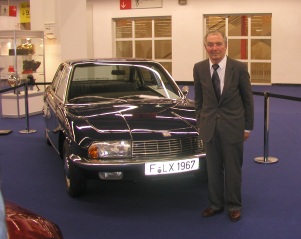 When the car was first presented to the board,
some brassheads were shocked by the high tail of the Ro 80. But soon everybody
got accustomed to it, and nowadays we judge its high 'bottom' as being normal -
compared with other contemporary cars it is very moderate and elegant throughout.
Also at the Frankfurt Motor Show fall 67, where the car was presented to the
public, enthusiasm was not as overwhelming as often reported by interested
parties. Claus Luthe mixed with the public and heard mostly negative reactions,
nobody appreciated the new wedge-design, and general acceptance was rather low.
Another statement, which did so well in advertisements, was that about the wind
tunnel design. Claus Luthe: Pure nonsense, we put the car into the windtunnel
for the first time when the design was complete, and everybody (including Luthe
himself) was surprised by the low drag coefficient of the body. When the car was first presented to the board,
some brassheads were shocked by the high tail of the Ro 80. But soon everybody
got accustomed to it, and nowadays we judge its high 'bottom' as being normal -
compared with other contemporary cars it is very moderate and elegant throughout.
Also at the Frankfurt Motor Show fall 67, where the car was presented to the
public, enthusiasm was not as overwhelming as often reported by interested
parties. Claus Luthe mixed with the public and heard mostly negative reactions,
nobody appreciated the new wedge-design, and general acceptance was rather low.
Another statement, which did so well in advertisements, was that about the wind
tunnel design. Claus Luthe: Pure nonsense, we put the car into the windtunnel
for the first time when the design was complete, and everybody (including Luthe
himself) was surprised by the low drag coefficient of the body.
x Claus
Luthe hinter dem Lenkrad des Ro80.
© Photo's Claus Heintsch-Rohr
The design had
been done purely on intuition. "After these wind tunnel tests, the outer shape
of the body was not modified at all. We got, however, new insights into the
airflow through the engine compartment and the possible air outlets for the
passenger room. These could have been moved to the rear end of the boot, but the
improvement was so marginal and the cost involved so high that these outlets
remained in the C-column."
Talking about aerodynamics, Claus Luthe refers
to early work done in the thirties, when pioneers such as Jaray and
Koenig-Fachsenfeld tried to apply to motorcars the aerodynamic know-how gained
in aeroplanes, and he calls the Citroën DS an example of the 'old school' of
aerodynamics (massive rounded front, long reduced tail). Many of us know that it
was Professor Kamm who discovered that aeroplane-like aerodynamics are
infeasible on cars, and that he created the cut-off bodies and the sharp edges
('Abrißkanten') so characteristic of later sports cars. This type of tail design
was, in honour of Prof. Kamm, often called 'K-Heck' (K-type rear shape).
Aerodynamics were, right from the start, one
of the mission statements of Mr.Praxl, the Ro 80 project manager at NSU, and he
always supported Luthe in his struggle for a design which guaranteed a low drag
coëfficient. After all, the team was still too reluctant in translating the
basic idea 'low front - high tail' into reality. This was proven by later wind
tunnel experiments done at VW's in Wolfsburg where a dramatic reduction af the
drag coëfficient could be achieved by a bulkier boot shape. In Claus Luthe's
words "the rear end of the car was, looking from above, too round." (It is
worth while to have these facts in mind when reading about 'wind tunnel design'
and similar statements in advertisements. Not to forget what some smart
journalists published about the car 'shaped by the wind'. CvK)
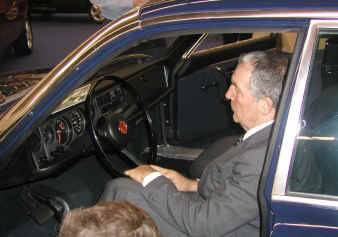 There is also some other gossip and unclear
information around the Ro 80 design. When it was suggested that the Ro 80 body
had been styled in Italy, NSU did, in first instance, not deny these rumours. In
my view this was a lack of respect for their own designer, Claus Luthe. On the
other hand, isn't it flattering to call a design italian? Someone also pointed
at a link between NSU and Pio Manzu. Claus Luthe tells the real story: Just
before the pubic presentation, the NSU board had agreed to scrap all names from
the press material in order to avoid a glorification of individuals. If you
mention the project coordinator Praxl and the people who worked with him (Schmidt
for suspensions and Erlewein for coachwork), and the stylist Luthe - where is
the end? A car is always the product of a much bigger team. Claus Luthe
regretted that he was not mentioned as the stylist of the Ro 80 body, his first
big job, and his real break-through. There is also some other gossip and unclear
information around the Ro 80 design. When it was suggested that the Ro 80 body
had been styled in Italy, NSU did, in first instance, not deny these rumours. In
my view this was a lack of respect for their own designer, Claus Luthe. On the
other hand, isn't it flattering to call a design italian? Someone also pointed
at a link between NSU and Pio Manzu. Claus Luthe tells the real story: Just
before the pubic presentation, the NSU board had agreed to scrap all names from
the press material in order to avoid a glorification of individuals. If you
mention the project coordinator Praxl and the people who worked with him (Schmidt
for suspensions and Erlewein for coachwork), and the stylist Luthe - where is
the end? A car is always the product of a much bigger team. Claus Luthe
regretted that he was not mentioned as the stylist of the Ro 80 body, his first
big job, and his real break-through.
The truth was, however, revealed soon,
although in a somewhat unelegant way by some british motor journalists, to whom
Claus Luthe had to explain some of the design principles on which the Ro 80 body
is based. He did this in the same presentaion room at the NSU gate number one,
where we are standing now, autumn 1995, and where the photographs for this
article were taken.
Claus Luthe also mentiones some details which
have not been realized, e.g. the double edge in the roof, which would have been
a formal link between those of the bonnet and the boot lid. This double edge can
still be seen in early designs and the 1:5 model, but when Claus Luthe designed
a roof panel of brushed stainless steel (giving the roof and windows section an
almost immaterial appearance), it had to be abandoned because of the poorer
malliability of this material. When the final decision for painted steel was
made, the way back to the double edge was no more possible since new costly
mouldings would have been required.
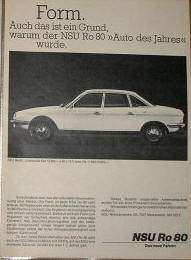 Then Claus Luthe spoke about general design
problems, and he said, what I had also heard erlier from other designers: each
successful design contains some inconsistencies, details which 'just do not fit'
and which create a kind of inner tension - if not, you have the 'clean'
impersonal designs of some japanese cars, where one model is hard to distinguish
from the other. At another occasion he expressed his own ambitions as "... to
create car bodies which present themselves optically elegant but not dominating
between nature and architecture, not as an optical environmental pollution." I'm
sure all Ro 80-fans will join me in agreeing that Claus Luthe achieved his
intention. Then Claus Luthe spoke about general design
problems, and he said, what I had also heard erlier from other designers: each
successful design contains some inconsistencies, details which 'just do not fit'
and which create a kind of inner tension - if not, you have the 'clean'
impersonal designs of some japanese cars, where one model is hard to distinguish
from the other. At another occasion he expressed his own ambitions as "... to
create car bodies which present themselves optically elegant but not dominating
between nature and architecture, not as an optical environmental pollution." I'm
sure all Ro 80-fans will join me in agreeing that Claus Luthe achieved his
intention.
When the Ro was, after a period 'in the
freezer', elected for production, Claus Luthe wanted to give the design the
final touch. After all modifications and technical changes, he was not quite
happy with the result, he had not given it the finishing touch. Then he was
allowed eight working days to update the design! Now, from the distance, he
gives another version of the statement he is often quoted for: 'The car was
taken off my hands too early'. Now he says: 'For every designer comes the day
when he has to finish his work, when he has to agree that all additions would
not result in any major improvement.' But eight days was really very short.
I asked Claus Luthe about the rumours that NSU
had designed other body-styles to complement the four-door-sedan; Simon Kremer
in particular mentioned this as a historic legitimation for his roadsters. Luthe
said: "If you hold a successful design in your hands, you try left and right
what its potential is, what can be made out of it." Luthe told me that he had
developed a 1:5 station car model and that he finalised the drawings for a
two-door version. These designs, irreplaceable masters, were sent to Wolfsburg
where they are now 'not traceable' in the archives.
Claus Luthe also comments on other vehicles
exposed in the show:
Prinz 1: "You never looked right ahead since the desaxed placing of the pedals
forced you into a diagonal sitting position." Result of the sub-compact design
with the pedals between the wheelhouses on top of the front axle!
About the Wankel-Spider: "This was my own adaptation of Bertone's Sport-Prinz."
When I complimented him with the excellent ragtop (disappears completely when
open, and gives really good weather-protection when closed) he said in his
modest way: But that's what you learn as a coachbuilder.
Mrs. Luthe stayed more in the twowheeler section of the NSU pavillon. She told
me that her first transport was a Fox motorbike, and she is adamant that only
the four-stroke model is 'the real thing', not the two-stroke. Her father, an
NSU dealer, had intended to give her a Lambretta scooter. Violent opposition
made him change his mind and he gave her the beloved Fox - the real thing!
Some of the information I received from Claus
Luthe is a confirmation of what I had read previously, but many details were new
to me, and I was particularly happy to receive the information from the real
authority. Thank you, Herr and Frau Luthe!
C.v.Klösterlein.
|
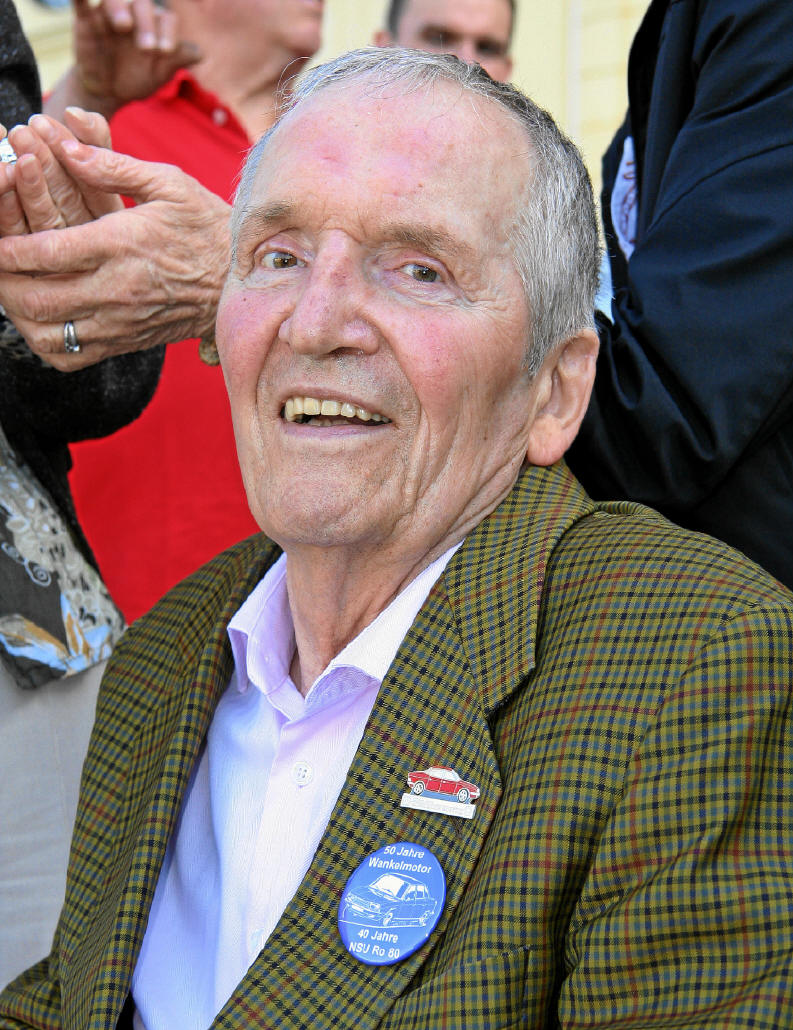
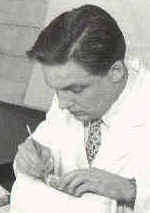 De ontwerper van de Ro 80 - Claus Luthe -
was verantwoordelijk voor een flink aantal auto-ontwerpen op onze wegen. Welke dat precies geweest zijn kunt onder in de tabel zien maar een ervan trekt natuurlijk
onze bijzondere aandacht, u raadt het al: de NSU Ro 80. Luthe was verantwoordelijk voor de uiteindelijke vorm van de NSU Ro 80. Luthe
was regelmatig te gast bij diverse Ro 80 clubs.
De ontwerper van de Ro 80 - Claus Luthe -
was verantwoordelijk voor een flink aantal auto-ontwerpen op onze wegen. Welke dat precies geweest zijn kunt onder in de tabel zien maar een ervan trekt natuurlijk
onze bijzondere aandacht, u raadt het al: de NSU Ro 80. Luthe was verantwoordelijk voor de uiteindelijke vorm van de NSU Ro 80. Luthe
was regelmatig te gast bij diverse Ro 80 clubs.


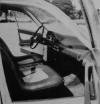
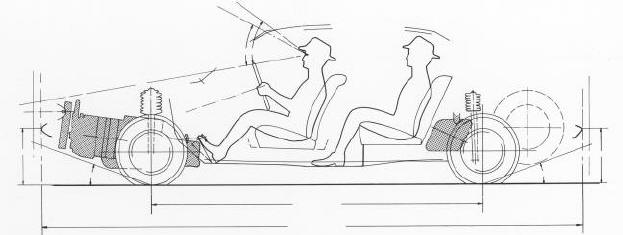 Een eisenpakket, dat was alles wat de Designer als uitgangspunt
had. Geen firmatraditie geen voorganger, geen verdere voorschriften. Zo ontstond
de Ro 80 "auto zonder voorganger en/of navolger".
Een eisenpakket, dat was alles wat de Designer als uitgangspunt
had. Geen firmatraditie geen voorganger, geen verdere voorschriften. Zo ontstond
de Ro 80 "auto zonder voorganger en/of navolger". 
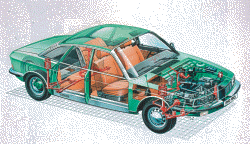
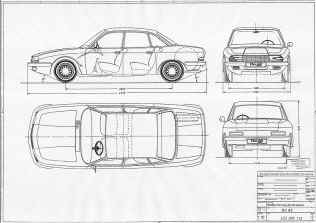
 Natuurlijk heeft Luthe in diverse Ro's
gereden, Hij had nog steeds een "restauratie" object. Ook
was hij nog in het bezit van het 1:5 model, gekregen bij het vertrek naar BMW. Luthe
woonde tot aan zijn dood gepensioneerd in München. Als hij het over mocht doen zei hij ooit
-zou hij - wat de Ro betreft - de wieluitsparingen herzien, ook zouden hier en
daar wat aërodynamische aanpassingen moeten komen. De tochtende deuren bij hoge
snelheid waren ook een doorn in het oog.
Natuurlijk heeft Luthe in diverse Ro's
gereden, Hij had nog steeds een "restauratie" object. Ook
was hij nog in het bezit van het 1:5 model, gekregen bij het vertrek naar BMW. Luthe
woonde tot aan zijn dood gepensioneerd in München. Als hij het over mocht doen zei hij ooit
-zou hij - wat de Ro betreft - de wieluitsparingen herzien, ook zouden hier en
daar wat aërodynamische aanpassingen moeten komen. De tochtende deuren bij hoge
snelheid waren ook een doorn in het oog. 

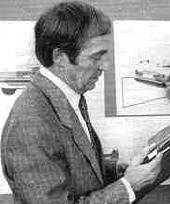
 Volgens de bedrijfsfilosofie van NSU en later
ook AUDI worden de individuele medewerkers niet genoemd. In de persmappen e.d.
kom je de naam Luthe dan ook niet tegen. Directie leden en
projectverantwoordelijken echter wel. Vandaar dat het mogelijk is dat de naam
Luthe bij weinigen bekend is geworden. De naam van projectleider Ewald Praxl
duikt in publicaties op alsof hij zelf verantwoordelijk is geweest voor de
tekeningen van koets en motor, wij weten inmiddels wel beter. Dit in
tegenstelling tot veel Italiaanse ontwerpers zoals bijvoorbeeld
Volgens de bedrijfsfilosofie van NSU en later
ook AUDI worden de individuele medewerkers niet genoemd. In de persmappen e.d.
kom je de naam Luthe dan ook niet tegen. Directie leden en
projectverantwoordelijken echter wel. Vandaar dat het mogelijk is dat de naam
Luthe bij weinigen bekend is geworden. De naam van projectleider Ewald Praxl
duikt in publicaties op alsof hij zelf verantwoordelijk is geweest voor de
tekeningen van koets en motor, wij weten inmiddels wel beter. Dit in
tegenstelling tot veel Italiaanse ontwerpers zoals bijvoorbeeld 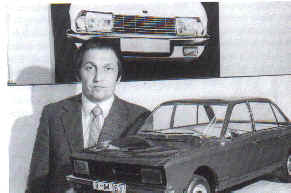
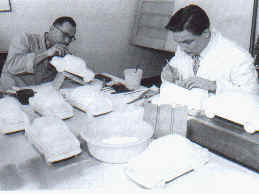
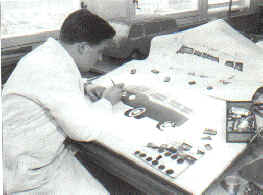
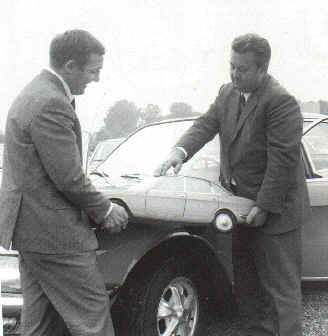
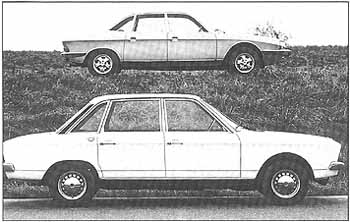
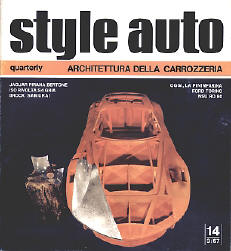 Even
terug naar de eerste persmap van de Ro 80, daar wordt melding gemaakt van de
volgende interessante feiten. In de map staan een aantal fictieve vragen, een
daarvan luidt: van wie komt het ontwerp van de Ro 80? Het antwoord luidt: de NSU
Ro 80 heeft een functionele styling en is geconstrueerd.
Even
terug naar de eerste persmap van de Ro 80, daar wordt melding gemaakt van de
volgende interessante feiten. In de map staan een aantal fictieve vragen, een
daarvan luidt: van wie komt het ontwerp van de Ro 80? Het antwoord luidt: de NSU
Ro 80 heeft een functionele styling en is geconstrueerd.
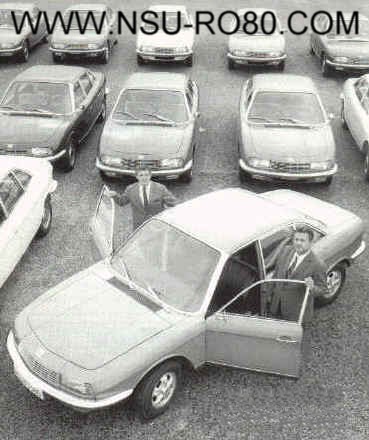
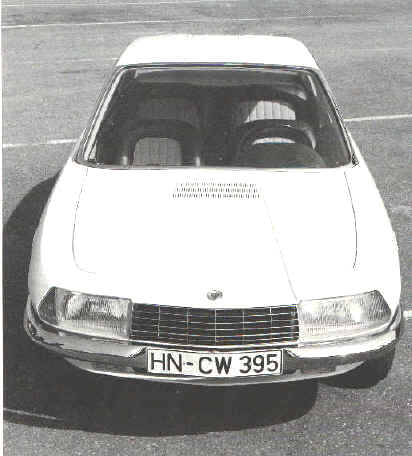
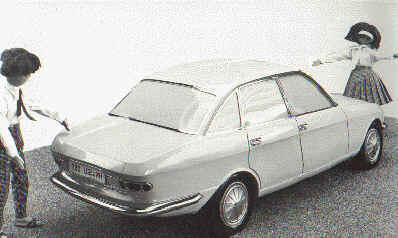
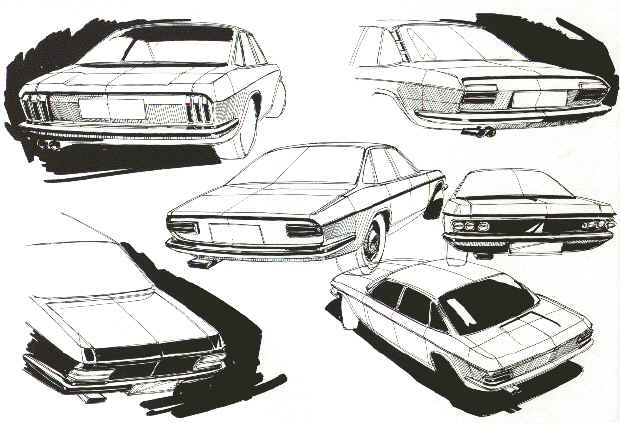
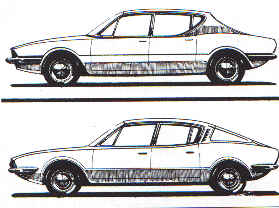
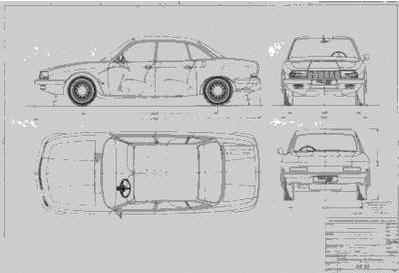
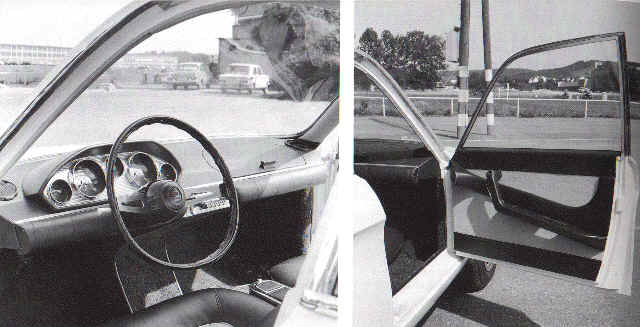
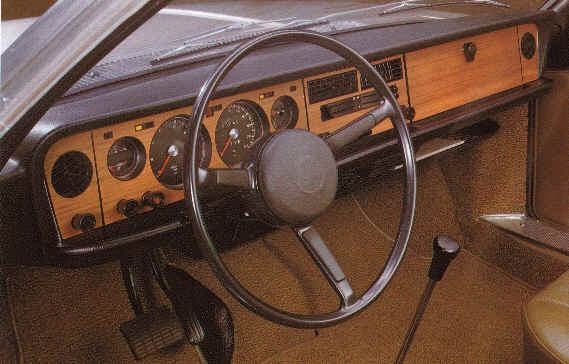
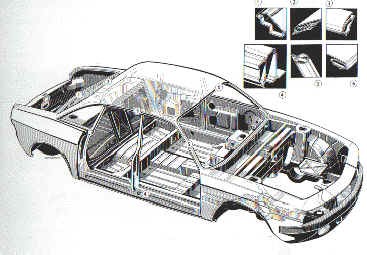
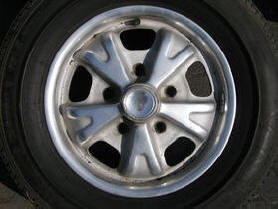
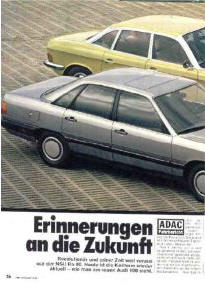
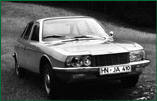
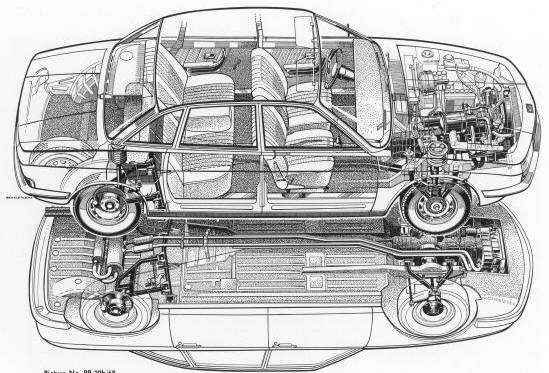
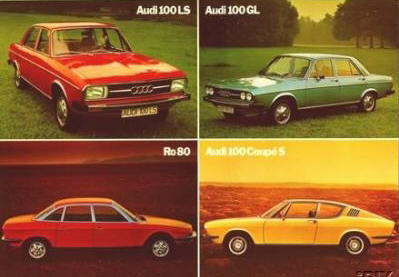
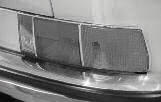

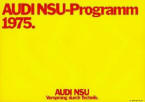 In
1975 kwam de grootste aanpassing aan de koets, grote achterlichten en een
rubber stootstrip op de bumpers. Ook het embleem achter op het
kofferdeksel werd veranderd (foto's boven).
In
1975 kwam de grootste aanpassing aan de koets, grote achterlichten en een
rubber stootstrip op de bumpers. Ook het embleem achter op het
kofferdeksel werd veranderd (foto's boven).
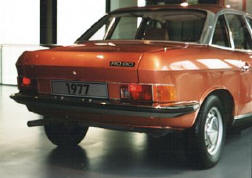
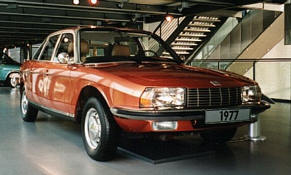
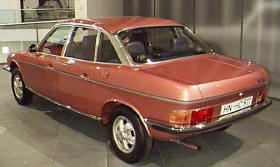
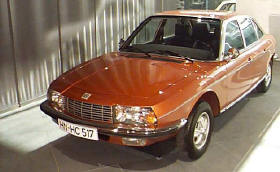
 We strolled in the exhibition hall between all
the NSU vehicles presented, and of course we stopped at the Ro 80. Claus Luthe
explained some design details. He stops at the front of the car and says:
We strolled in the exhibition hall between all
the NSU vehicles presented, and of course we stopped at the Ro 80. Claus Luthe
explained some design details. He stops at the front of the car and says: When the car was first presented to the board,
some brassheads were shocked by the high tail of the Ro 80. But soon everybody
got accustomed to it, and nowadays we judge its high 'bottom' as being normal -
compared with other contemporary cars it is very moderate and elegant throughout.
Also at the Frankfurt Motor Show fall 67, where the car was presented to the
public, enthusiasm was not as overwhelming as often reported by interested
parties. Claus Luthe mixed with the public and heard mostly negative reactions,
nobody appreciated the new wedge-design, and general acceptance was rather low.
Another statement, which did so well in advertisements, was that about the wind
tunnel design. Claus Luthe: Pure nonsense, we put the car into the windtunnel
for the first time when the design was complete, and everybody (including Luthe
himself) was surprised by the low drag coefficient of the body.
When the car was first presented to the board,
some brassheads were shocked by the high tail of the Ro 80. But soon everybody
got accustomed to it, and nowadays we judge its high 'bottom' as being normal -
compared with other contemporary cars it is very moderate and elegant throughout.
Also at the Frankfurt Motor Show fall 67, where the car was presented to the
public, enthusiasm was not as overwhelming as often reported by interested
parties. Claus Luthe mixed with the public and heard mostly negative reactions,
nobody appreciated the new wedge-design, and general acceptance was rather low.
Another statement, which did so well in advertisements, was that about the wind
tunnel design. Claus Luthe: Pure nonsense, we put the car into the windtunnel
for the first time when the design was complete, and everybody (including Luthe
himself) was surprised by the low drag coefficient of the body.  There is also some other gossip and unclear
information around the Ro 80 design. When it was suggested that the Ro 80 body
had been styled in Italy, NSU did, in first instance, not deny these rumours. In
my view this was a lack of respect for their own designer, Claus Luthe. On the
other hand, isn't it flattering to call a design italian? Someone also pointed
at a link between NSU and Pio Manzu. Claus Luthe tells the real story: Just
before the pubic presentation, the NSU board had agreed to scrap all names from
the press material in order to avoid a glorification of individuals. If you
mention the project coordinator Praxl and the people who worked with him (Schmidt
for suspensions and Erlewein for coachwork), and the stylist Luthe - where is
the end? A car is always the product of a much bigger team. Claus Luthe
regretted that he was not mentioned as the stylist of the Ro 80 body, his first
big job, and his real break-through.
There is also some other gossip and unclear
information around the Ro 80 design. When it was suggested that the Ro 80 body
had been styled in Italy, NSU did, in first instance, not deny these rumours. In
my view this was a lack of respect for their own designer, Claus Luthe. On the
other hand, isn't it flattering to call a design italian? Someone also pointed
at a link between NSU and Pio Manzu. Claus Luthe tells the real story: Just
before the pubic presentation, the NSU board had agreed to scrap all names from
the press material in order to avoid a glorification of individuals. If you
mention the project coordinator Praxl and the people who worked with him (Schmidt
for suspensions and Erlewein for coachwork), and the stylist Luthe - where is
the end? A car is always the product of a much bigger team. Claus Luthe
regretted that he was not mentioned as the stylist of the Ro 80 body, his first
big job, and his real break-through.  Then Claus Luthe spoke about general design
problems, and he said, what I had also heard erlier from other designers: each
successful design contains some inconsistencies, details which 'just do not fit'
and which create a kind of inner tension - if not, you have the 'clean'
impersonal designs of some japanese cars, where one model is hard to distinguish
from the other. At another occasion he expressed his own ambitions as "... to
create car bodies which present themselves optically elegant but not dominating
between nature and architecture, not as an optical environmental pollution." I'm
sure all Ro 80-fans will join me in agreeing that Claus Luthe achieved his
intention.
Then Claus Luthe spoke about general design
problems, and he said, what I had also heard erlier from other designers: each
successful design contains some inconsistencies, details which 'just do not fit'
and which create a kind of inner tension - if not, you have the 'clean'
impersonal designs of some japanese cars, where one model is hard to distinguish
from the other. At another occasion he expressed his own ambitions as "... to
create car bodies which present themselves optically elegant but not dominating
between nature and architecture, not as an optical environmental pollution." I'm
sure all Ro 80-fans will join me in agreeing that Claus Luthe achieved his
intention. 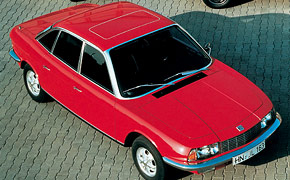 Privat musste Luthe allerdings eine
Tragödie verkraften: Nach einem Streit hatte der Topdesigner seinen 33
Jahre alten Sohn Ulrich mit mehreren Messerstichen getötet. Er wurde
deshalb zu einer Freiheitsstrafe von zwei Jahren und neun Monaten
verurteilt. Bereits kurz nach der Verurteilung wurde der Haftbefehl gegen
ihn aber außer Vollzug gesetzt und er kam auf freien Fuß.
Privat musste Luthe allerdings eine
Tragödie verkraften: Nach einem Streit hatte der Topdesigner seinen 33
Jahre alten Sohn Ulrich mit mehreren Messerstichen getötet. Er wurde
deshalb zu einer Freiheitsstrafe von zwei Jahren und neun Monaten
verurteilt. Bereits kurz nach der Verurteilung wurde der Haftbefehl gegen
ihn aber außer Vollzug gesetzt und er kam auf freien Fuß.